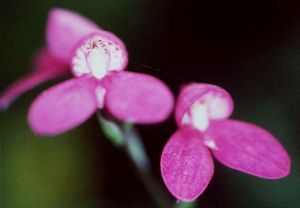No edit summary |
No edit summary Tag: wikieditor |
||
| Line 10: | Line 10: | ||
Found as a small to large sized, cold growing terrestrial in South Africa near permanent and fast moving water along streams, rock crevasses, seepage areas and waterfalls to elevations of 1000 meters, with narrowly oblanceolate or elliptic basal leaves with smaller stem leaves that blooms on a 5 to 12.5cm long, apical, loosely many flowered inflorescence occurring in the winter and late summer. Culture as for ''Disa uniflora''. | Found as a small to large sized, cold growing terrestrial in South Africa near permanent and fast moving water along streams, rock crevasses, seepage areas and waterfalls to elevations of 1000 meters, with narrowly oblanceolate or elliptic basal leaves with smaller stem leaves that blooms on a 5 to 12.5cm long, apical, loosely many flowered inflorescence occurring in the winter and late summer. Culture as for ''Disa uniflora''. | ||
Latest revision as of 16:02, 11 June 2024

Common Name: The Tripetalus-Like Disa
Scented: yes
Light Requirements: full sun
Temperature Requirements: cold
Blooms: late autumn to late summer
Flower Size: to 2.5cm
Synonyms: Disa excelsa Sw. 1800; Disa falcata Schltr. 1893; Disa venosa Lindl. 1838; Herschelia excelsa (Thunb.) Kraenzl. 1904; Herschelianthe excelsa (Thunb.) Rauschert 1983; *Orchis tripetaloides L. f. 1781; Satyrium excelsum Thunb. 1784
Found as a small to large sized, cold growing terrestrial in South Africa near permanent and fast moving water along streams, rock crevasses, seepage areas and waterfalls to elevations of 1000 meters, with narrowly oblanceolate or elliptic basal leaves with smaller stem leaves that blooms on a 5 to 12.5cm long, apical, loosely many flowered inflorescence occurring in the winter and late summer. Culture as for Disa uniflora.